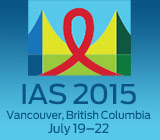 Transgender women and men who have sex with men (MSM) adhered at high rates to Truvada (tenofovir/emtricitabine) as pre-exposure prophylaxis (PrEP) in an American real-world study of the HIV prevention method, especially if they were at higher risk of contracting the virus. Researchers presented results from the U.S. PrEP Demonstration Project at the Eighth International AIDS Society Conference on HIV Pathogenesis, Treatment and Prevention in Vancouver, British Columbia.
Transgender women and men who have sex with men (MSM) adhered at high rates to Truvada (tenofovir/emtricitabine) as pre-exposure prophylaxis (PrEP) in an American real-world study of the HIV prevention method, especially if they were at higher risk of contracting the virus. Researchers presented results from the U.S. PrEP Demonstration Project at the Eighth International AIDS Society Conference on HIV Pathogenesis, Treatment and Prevention in Vancouver, British Columbia.
Between October 2012 and January 2014, the demonstration project enrolled 557 MSM and trans women in municipal sexually transmitted infection (STI) and community health clinics in San Francisco, Miami and Washington, DC. The participants contributed a total of 481 person-years of data. (Person-years refer to the cumulative number of years of data on study participants.)
The investigators conducted dried blood spot testing on 294 participants to determine how well they were adhering to the daily regimen of Truvada; 63 percent of them had drug levels at all study visits suggesting they were taking Truvada at least four days a week. (The 2014 iPrEx open-label extension (OLE) study of MSM and trans women estimated that taking PrEP four or more days a week offers maximum protection against HIV.) Three percent of them had test levels at all study visits suggesting they were taking fewer than two pills each week, and 32 percent had an inconsistent pattern of adherence.
By comparison, the participants in iPrEX OLE are estimated to have adhered at a rate of four or more pills each week just 33 percent of the time. In that study, PrEP had a population-level effectiveness of about 50 percent.
Being white (as opposed to Latino or black), having stable housing, and having a greater number of condomless anal sex partners were linked with a greater likelihood of taking at least four pills each week. (Only 7 percent of the participants were black.) Adherence was lower at the Miami site than at the other two.
There was no evidence that men took greater sexual risks during the study. At the outset, two-thirds of the men reported having recently had condomless receptive anal sex, a proportion that remained stable through the study. At the beginning of the demonstration project, the men reported a median of 5 anal sex partners during the previous three months, a figure that dropped to 4 by the study’s end.
STI rates were quite high among the participants, but the rates remained stable throughout the study. At the outset, 26 percent of the men had early syphilis, gonorrhea or chlamydia.
Twenty participants opted to stop PrEP during the study because they considered themselves at low risk of HIV. However, 65 percent of them reported condomless receptive anal sex during the previous three to six months.
Three participants were acutely infected with HIV upon enrolling in the demonstration project. Two people contracted the virus during the study. Dried blood spot test results showed that both had low or undetectable levels of PrEP.
Editor’s note: This article has been updated. Addtionally, a previous version of the article erroneously stated that black participants were more likely to adhere well to PrEP, whereas the opposite is true.
To read a press release about the study, click here.
Advertisement
Advertisement
Advertisement






Comments
Comments